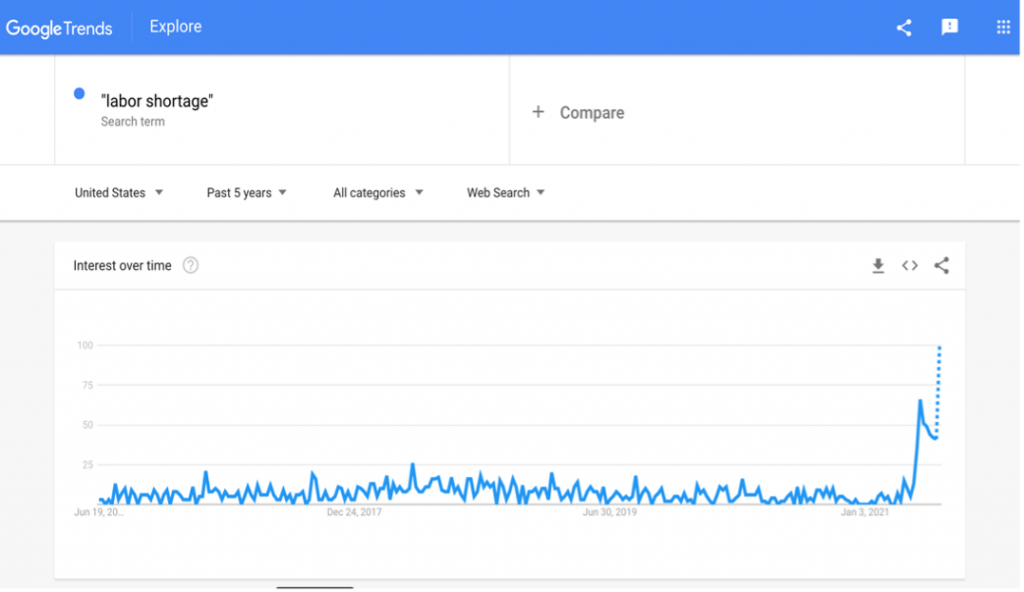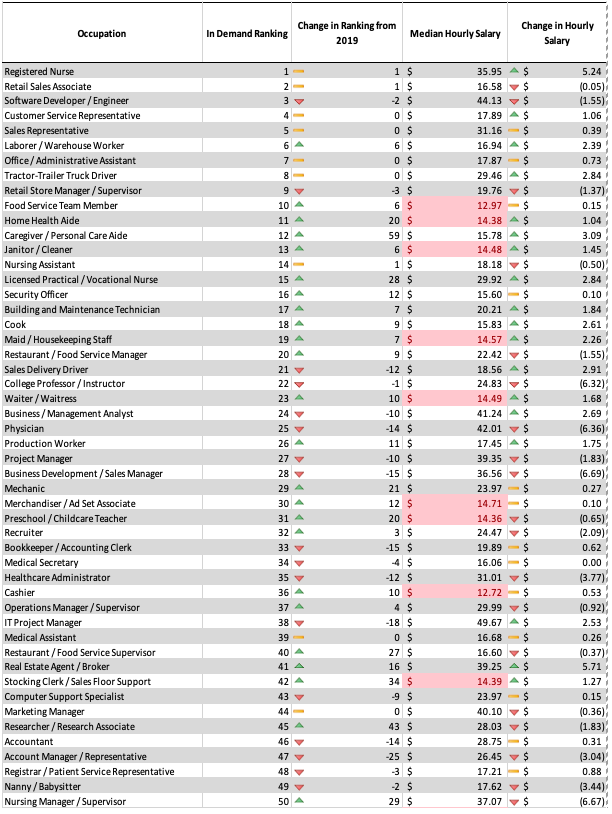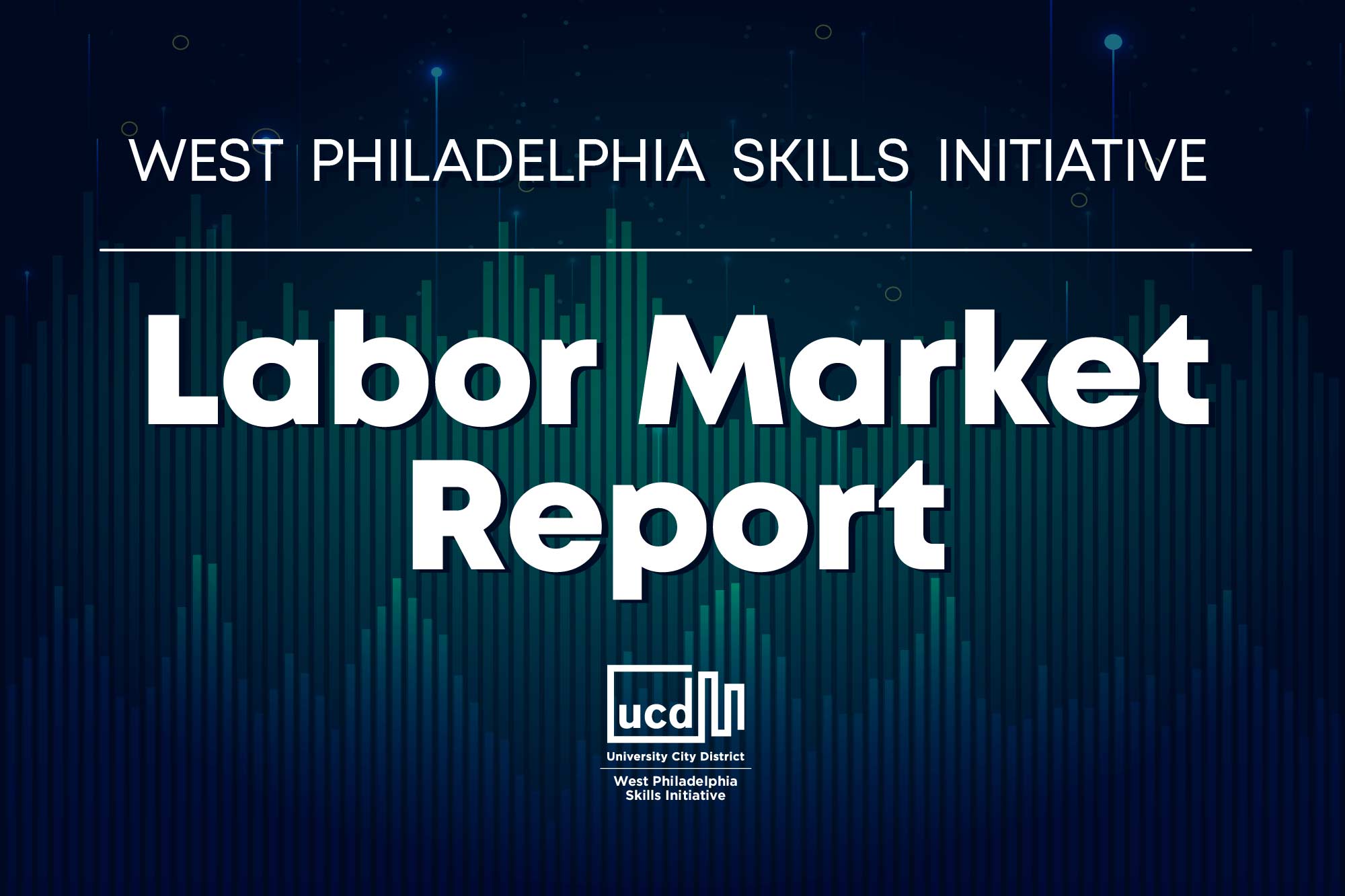We will be publishing labor market industry (LMI) data and important trends to consider in the development of an equitable economic recovery from the COVID-19 crisis. We are always looking for opportunities to learn, grow, and collaborate. Email wpsi@universitycity.org to learn more.
It seems like everywhere you turn someone is talking about a shortage of workers. A quick look at Google Trends confirms the prevalence of this topic in the recent past:

But hard-to-fill jobs are nothing new. What seems to be changing are the types of jobs that are hard to fill. Since comparing the current labor market with the labor market of one year ago presents an “apples to oranges” problem (remember last June?), we compared what jobs are considered “hard to fill” in the last month with those that were “hard to fill” in the same period in 2019, using Burning Glass Technologies‘ ranking of “hard to fill” jobs in the Philadelphia Metro Area.
For the most part, the hardest to fill jobs in 2019 mirror the hardest to fill jobs in 2021. The top five occupations are the same, with only slight changes in ranking. Registered Nurses, Retail Sales Associates, Software Developers, Customer Sales Representatives, and Sales Representatives continue to be the hardest to fill jobs for employers – the same as it was two years ago. All of these jobs pay wages over $15/hour, with RN positions averaging $35.95/hour (up from around $30.50/hour in 2019) and Software Developers averaging $44.13/hour.
Laborer/Warehouse Workers jobs made the biggest moves, going from the 11th most in-demand occupation up to the 6th. A lot of focus has been paid to restaurants struggling to find staff, and Food Service Team Member jobs are indeed in higher demand than in 2019, having moved up six spots to the 10th most in-demand job in the region. However, it’s the only job in the top ten with a median average salary of under $15/hour. The median salary hasn’t changed much since 2019 either – up on average just $0.15/hour.
What is notable about the data is what jobs have moved furthest up in the rankings since 2019. Home Health Aides moved up from the 31st most in-demand job to the 11th, and Personal Care Aides moved up an astonishing 59 positions, from 71st to 12th. It’s possible that the jump in demand for these roles is temporary, as family caregivers begin to go back to the office or school. Both jobs are relatively low-wage, paying around $15/hour, but both have seen pay increases of over $1/hour from 2019 levels.
The chart below lists the top 50 “hard to fill” jobs in the Philadelphia area over the last month, along with the change in their ranking from 2019, average hourly salary, and change in average hourly salary since 2019.

As we noted in this post from early May, there will always be some lag time between the staffing needs of employers and the supply of labor to fill those roles. The current spotlight on that mismatch reflects a unique moment in time as we begin to emerge from the COVID-19 pandemic. Over the coming months, the data points toward many of these temporary shortages working themselves out, as employers raise wages and benefits to entice workers, people begin to feel comfortable going back to work, children return to school, and vaccination rates rise.

